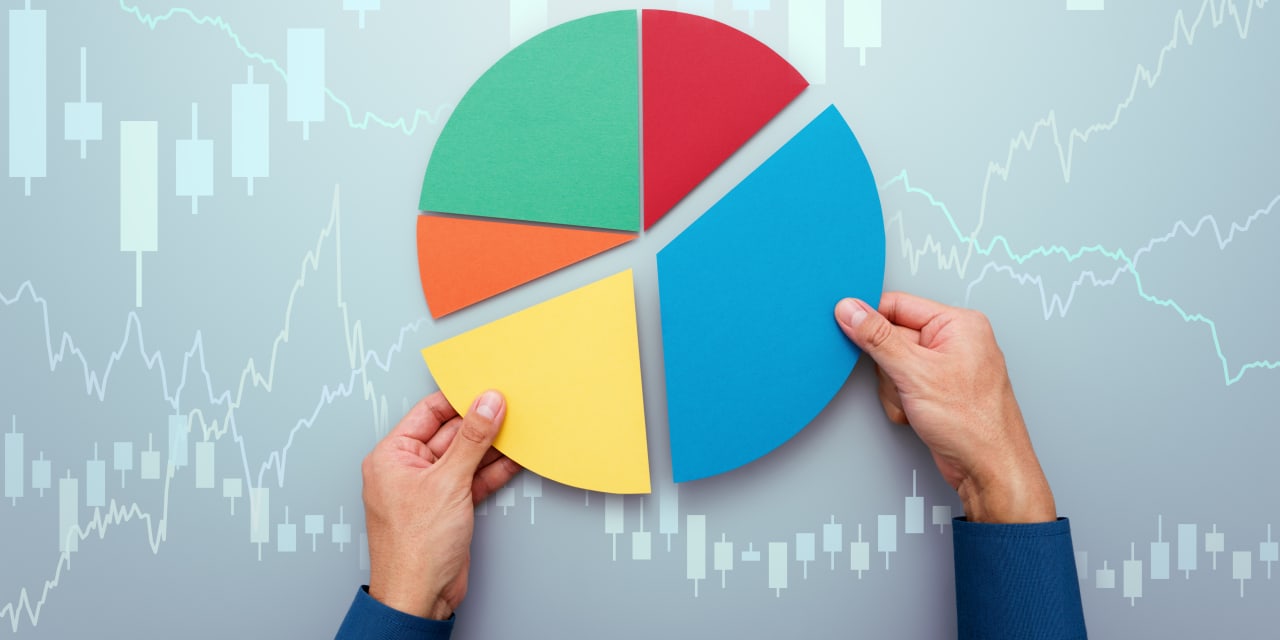Passive investing has become more popular than active investing in the U.S., but the trend may be changing soon, according to Jill Carey Hall, U.S. equity strategist at BofA Global Research.
The amount of assets managed by passive funds have overtaken those overseen by active funds, according to data from BofA Global Research. Only 47% of assets under management in the U.S. are now overseen by active funds, down from 80% in 2009, the data shows.
BofA Global Research
Active investing means buying and selling stocks or other investments regularly, while passive investing refers to the buy-and-hold strategy, where buying and selling is minimized. One of the most common forms of passive investing is index investing, where investors put their money in funds that track a broad market index, such as the S&P 500
SPX.
Also read: Markets are ‘fundamentally broken’ due to passive investing, says David Einhorn
Funds have been flowing out from active funds into passive funds over the past few years, partly due to the poor performance of some active funds, Carey Hall said in a phone interview. Passive funds usually have lower fees than their actively managed counterparts.
However, the flow from active to passive funds may be now at a tipping point, Carey Hall said.
There has been a slowdown recently in the outflow of funds from active funds to passive funds, BofA’s data shows.
Clients of BofA Securities are now also buying more single stocks than exchange-traded funds, as the rise of Robinhood
HOOD,
and the hype about meme stocks during the past few years brought in a new generation of stock pickers, according to Carey Hall.
BofA Securities
In the current market environment, the valuations for stocks are elevated, while the dispersion of major indexes stands high, which means that stocks tend not to act in concert. “There are both cheap and expensive stocks in the indexes, which tend to be a good environment for stock picking,” Carey Hall said.
Meanwhile, Carey Hall expects the market leadership to broaden this year. While the stock market’s rally since last year was mostly driven by a few mega-cap tech stocks, if more stocks participates in it, “your chances of selecting an outperforming stock are higher,” she said.
Read: ‘Magnificent 7’ acting more like ‘Magnificent 4’ in early 2024
Carey Hall also said her team expects a pickup in volatility this year, which is good for stock picking.
What stocks to pick
Investors should beware of cap-weighted index risks, according to a recent note by a group of BofA strategists including Carey Hall. While the S&P 500 is concentrated in statistically expensive mega-caps, the small-cap equity gauge Russell 2000
RUT
has a record percentage of non-earners, according to the note.
For investors to become more active this year, Carey Hall said she recommends investors to consider stocks “that act like stocks.”
“We’ve found there are certain sectors in which the stocks behave differently. You tend to see them less correlated with wider performance spreads. At the same time, some other sectors are more macro-driven and stocks in those sectors might all trade in the same direction,” she said.
For example, sectors such as healthcare see less correlation and more dispersion among stocks, while energy stocks are more correlated with each other, mostly driven by oil prices, Carey Hall said.
Investors should also consider high dividend-paying stocks, according to Carey Hall.
“If we’re in an environment where short interest rates are peaking, that’s an environment where stocks that offer high dividend yield above the cash yield may be attractive,” she said.







